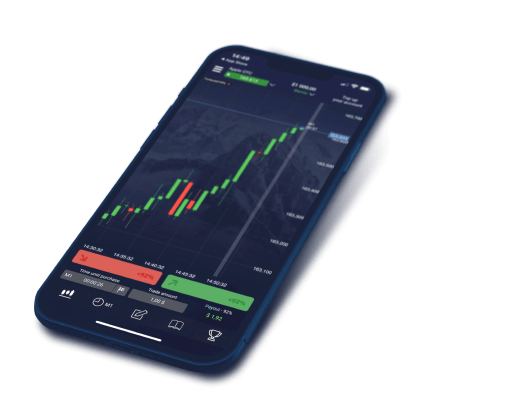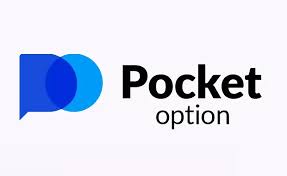Enhancing Trading Strategies with Pocket Option API Python

Maximizing Your Trading Potential: An Introduction to Pocket Option API Python
The world of online trading is constantly evolving, and with the emergence of automated trading systems, traders are always on the lookout for tools that can enhance their strategies. One such tool is the pocket option api python pocket option api python, offering powerful functionalities to automate trading processes and analyze market data with ease. In this article, we will delve into the various aspects of utilizing the Pocket Option API with Python, examining how it can streamline your trading practices and improve overall efficiency.
What is Pocket Option API?
The Pocket Option API is an interface provided by the Pocket Option trading platform that allows developers to interact programmatically with the trading environment. Through the API, traders can automate processes such as trade execution, market data retrieval, and portfolio management. This is essential for creating algorithms that can analyze market behavior, identify trends, and make trading decisions based on pre-defined criteria without the need for constant human intervention.
Getting Started with Python and Pocket Option API
To begin utilizing the Pocket Option API with Python, you will need to have a basic understanding of Python programming and how APIs work. Python is a popular choice among traders due to its simplicity and the wide range of libraries available for data analysis and trading automation.
Setting Up Your Environment
Before you can start coding, ensure that you have the following set up in your development environment:
- Python installed on your machine (preferably version 3.x).
- A suitable code editor (e.g., PyCharm, Visual Studio Code).
- The `requests` library for handling HTTP requests, which can be installed via pip:
pip install requestsAccessing the Pocket Option API
To access the Pocket Option API, you will typically require an API key, which is essential for authenticating your requests. You can usually find instructions for obtaining your API key in the Pocket Option documentation. Once you have your API key, you can start making requests to the API endpoints.
Basic API Functions
With the Pocket Option API, there are several key functions you can perform:
Market Data Retrieval
Retrieving market data is one of the primary functionalities you will utilize. Here’s a basic example of how you might fetch market data using Python:
import requests
api_url = 'https://api.pocketoption.com/v1/market_data'
headers = {'Authorization': 'Bearer YOUR_API_KEY'}
response = requests.get(api_url, headers=headers)
market_data = response.json()
print(market_data)
This code snippet sends a GET request to the market data endpoint and prints the retrieved data. You can modify the endpoint and parameters based on the specific data you are interested in.
Executing Trades
Executing trades programmatically can be highly beneficial, especially if you employ strategies that require rapid decision-making. Here is an example of how to execute a trade:
trade_url = 'https://api.pocketoption.com/v1/trade'
trade_payload = {
'symbol': 'EURUSD',
'amount': 50,
'direction': 'call', # or 'put'
 }
trade_response = requests.post(trade_url, headers=headers, json=trade_payload)
trade_result = trade_response.json()
print(trade_result)
}
trade_response = requests.post(trade_url, headers=headers, json=trade_payload)
trade_result = trade_response.json()
print(trade_result)
Ensure that you replace the payload values with the appropriate data based on your trading strategy and risk tolerance.
Data Analysis and Strategy Development
One of the key advantages of using Python with the Pocket Option API is the ability to perform data analysis. You can integrate libraries such as Pandas and NumPy to manipulate and analyze market data, which helps in developing robust trading strategies.
Using Pandas for Data Analysis
Pandas is a powerful library for data manipulation and analysis. You can use it to backtest your strategies or analyze historical market trends. Here’s a simple example of how to use Pandas:
import pandas as pd
# Assume market_data is a DataFrame containing your market data
market_data = pd.DataFrame({'Time': [], 'Price': []}) # Populate this with real data
# Calculate moving averages
market_data['MA_10'] = market_data['Price'].rolling(window=10).mean()
market_data['MA_50'] = market_data['Price'].rolling(window=50).mean()
print(market_data.tail())
This code creates a DataFrame and calculates 10-period and 50-period moving averages, which are crucial indicators in trading.
Implementing Your Trading Strategy
After analyzing the data and formulating your strategy, you can automate the entire process from data retrieval to trade execution. Combining the Pocket Option API with your trading algorithm allows for a more disciplined and data-driven approach to trading.
Example Strategy Implementation
# Simple strategy template
if market_data['MA_10'].iloc[-1] > market_data['MA_50'].iloc[-1]:
# Execute a trade based on the strategy
trade_response = requests.post(trade_url, headers=headers, json=trade_payload)
print("Trade executed:", trade_response.json())
Conclusion
Incorporating the Pocket Option API with Python into your trading routine can significantly enhance your ability to analyze markets and execute trades efficiently. With automation, traders can focus more on strategy development rather than the intricacies of manual trading. As you explore the capabilities of the Pocket Option API, remember that thorough testing and understanding risk management principles are paramount to successful trading.
Get Started Today
The possibilities with the Pocket Option API Python are vast. By learning how to leverage these tools, you can transform your trading experience and position yourself for more strategic and data-driven outcomes. Dive deep into the API documentation, experiment with different strategies, and continuously refine your approach to become a more proficient trader.